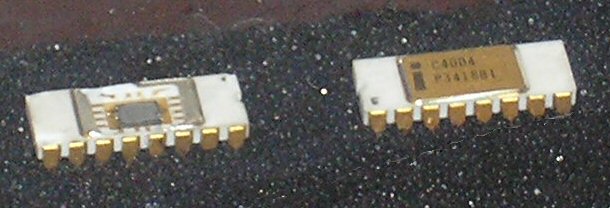My DRAM test found an actual problem on the Scratchpad Register board!
Should I be excited that my test performed its function, or sad that there was a problem with the board?
The test is designed to work in concert with my logic analyzer. A PicoBlaze program implements the March C DRAM test, reading and writing the scratchpad registers repeatedly. If it detects that the data returned from a register isn't the expected value, it pulses an output. This pulse triggers the logic analyzer to log and display the signals it's been recording, which shows me what's been going into and out of the board for the last 25 i4004 instruction cycles. I'd tested this test setup in simulation, using the Verilog Scratchpad board emulation in
place of the actual board, so I had some confidence that the test itself
wasn't broken. But this was the first time I'd connected it to the real board.
What I saw was the error pulse indicating an error for essentially every attempt to read a scratchpad register. Looking more closely, I saw that the signalling going into the Scratchpad board looked correct, but the data being read was always 1111.


